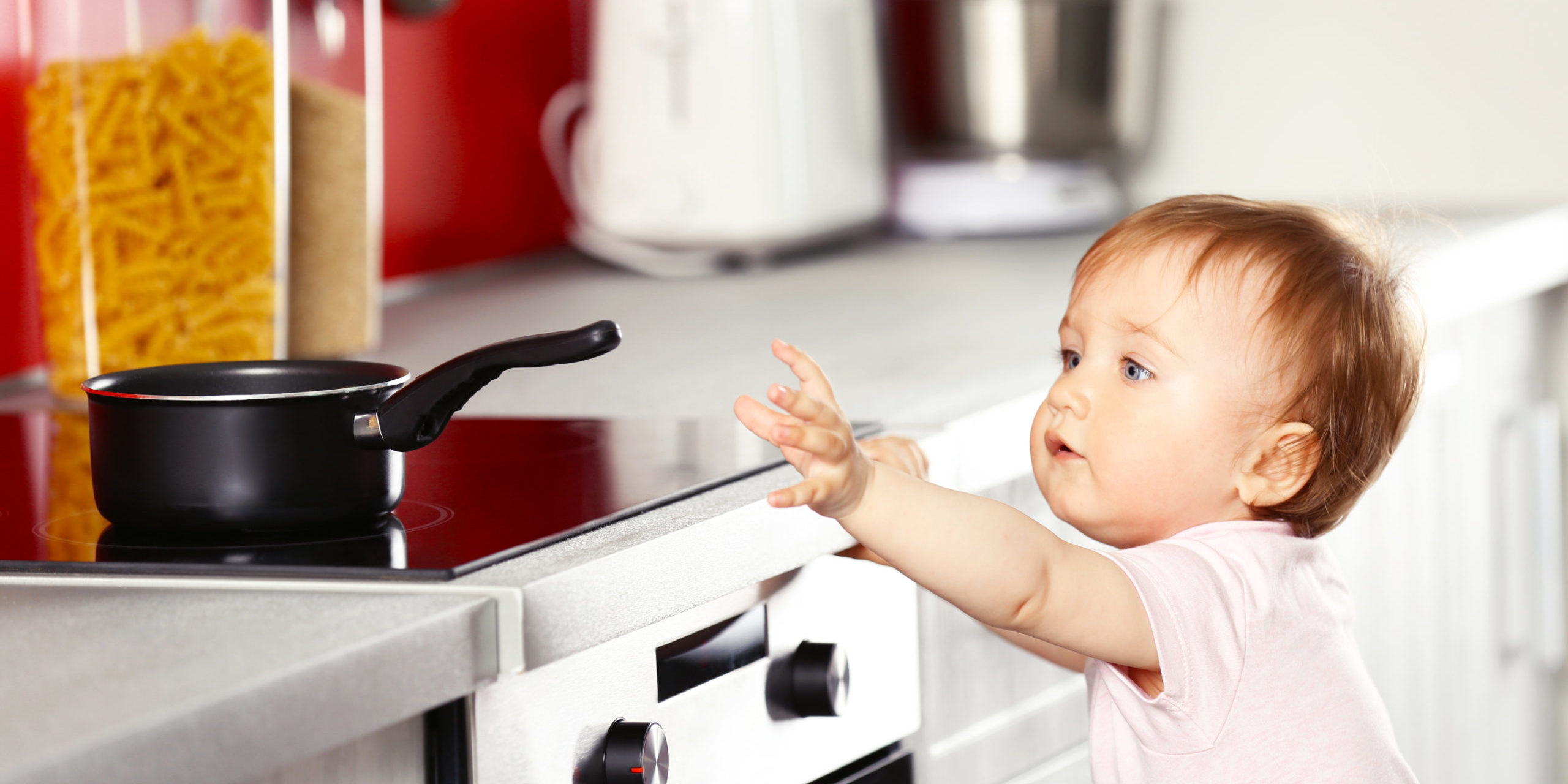Child Safety at Home
The home, although it may seem like a safe place, can hide many dangers for young children. Their curiosity and lack of risk awareness led them to explore without understanding the consequences.
According to INE data, more than 15% of all home accidents in Spain involve children under the age of 15. Identifying hazards and adopting preventive measures is key to avoiding them.
The kitchen can be the most dangerous place in the home
The kitchen is undoubtedly one of the areas with the highest concentration of risks. The heat generated by hobs or the oven during cooking poses a constant danger to children, who may suffer severe burns. Cooking with saucepan and frying pan handles always turned inwards will help prevent hot liquids from spilling.
Additionally, there are other risks, such as gas taps that children might accidentally turn on, electrical appliances they could start, and even sockets or cables that could be tampered with, posing a risk of electrocution.
Some appliances can be particularly dangerous for other reasons—for example, an open washing machine door could become a deadly hiding place for a trapped child.
Knives and sharp utensils, as well as cleaning products and medicines stored in low cupboards, are also potential hazards. Installing safety locks on drawers and cupboards is essential, including those in the waste or recycling area (paying special attention to button batteries).
There are also risks related to food consumption itself: be mindful of choking hazards (such as nuts, grapes, or small pieces of food) and potential food allergies. Paediatric professionals should determine when and how to introduce each food into a child’s diet.
The bathroom: Preventing falls and other risks
The bathroom is another high-risk area. Drowning can occur in seconds and with only a small amount of water, so a child should never be left alone in the bathtub. Additionally, hot water can cause severe burns—installing temperature regulators on taps and checking the water temperature before bathing is essential.
Due to its nature, bathroom surfaces can be slippery. As in the kitchen, it is important to choose materials that minimise this risk and ensure they remain clean and dry. Mirrors and shower screens can cause serious injuries if broken, so it is advisable to use safety glass.
Hygiene and cleaning products should be kept out of children’s reach, as should small electrical appliances such as hairdryers or straighteners, which can cause burns and pose a serious hazard if they come into contact with water.
And what about the rest of the house? Hazards in the living room, bedroom, terraces, and stairs…
Many accidents occur in other areas of the home. In the living room and bedrooms, unstable furniture poses a risk of crushing, so it’s recommended to secure shelves and furniture to the wall. Sockets should also be protected, and loose cables should be avoided to prevent tripping or electrical hazards.
Securing rugs will help prevent slips and falls for children running through hallways. Some plants, which an adult would never put in their mouth, such as poinsettias, azaleas, or pothos, are toxic to young children.
A potential fire in a child’s room can be fatal before an adult is alerted. Installing smoke detectors is a great idea to prevent this.
As for windows and terraces, the risk of falling is one of the most serious: installing safety locks and keeping furniture away to prevent easy access is crucial. Be careful with curtain cords and blind strings, as they can cause strangulation. Stairs and elevators are also hazardous: safety barriers at the first steps and accompanying children in the elevator are essential preventive measures.
10 Practical Tips to Prevent Child Accidents at Home
Preventing accidents at home not only involves adapting the environment but also educating and supervising children consistently. Here are some key tips to reinforce safety at home:
- Constant Supervision: The best safety measure is vigilance. Never leave a baby or young child alone in high-risk areas such as the kitchen, bathroom, or near windows and stairs.
- Use of Protectors and Locks: Install socket covers, locks on drawers and cupboards, as well as barriers on doors and railings on stairs.
- Safe Storage: Keep toxic products (cleaning, medications, cosmetics…) out of children’s reach, preferably in high cupboards with safety locks or behind a key.
- Avoid Choking and Suffocation Hazards: Keep small objects out of the child’s reach, check toys to ensure they are age-appropriate, and cut food into small pieces.
- Water Temperature Control: Regulate the water heater to prevent burns and always check the water before bathing. Never leave a child unsupervised in the bath.
- Protection on Windows and Balconies: Install safety locks and avoid placing furniture nearby that could serve as a step. Mosquito nets will not prevent falls.
- Anchoring Furniture and TVs: Secure shelves, dressers, and other furniture to the wall that could topple over if the child tries to climb on them.
- Beware of Cables and Hanging Objects: Children may pull on electrical cables, curtains, or blind cords, posing a risk of strangulation or falling heavy objects.
- Safe Use of Appliances and Hazardous Utensils: Keep knives, scissors, matches, and small appliances out of children’s reach, and unplug them when not in use.
- Education and Prevention: As the child grows, teach them to identify dangers and act cautiously. Making safety a habit is the best way to prevent accidents.
With a few small changes and the right habits, the home will be a safer environment for children, allowing them to explore and develop without unnecessary risks.
